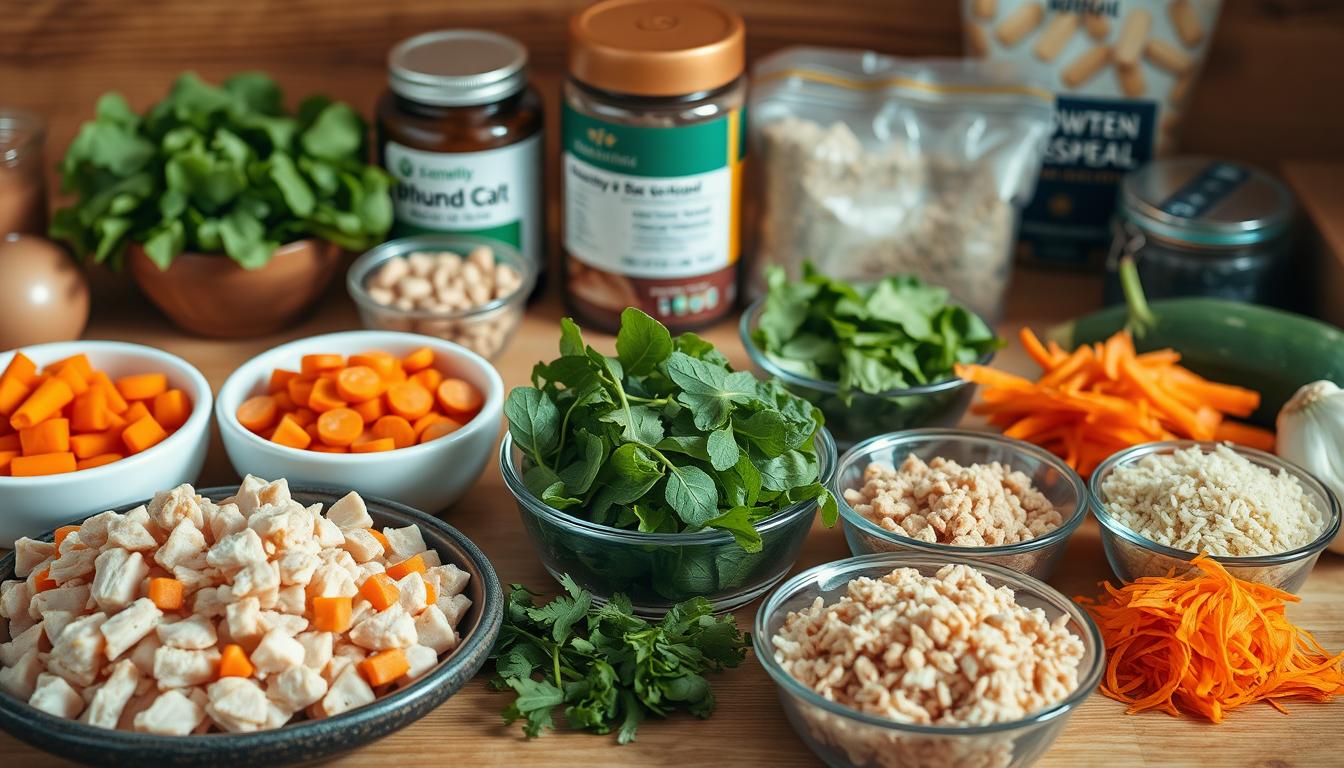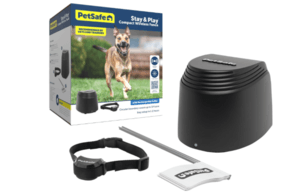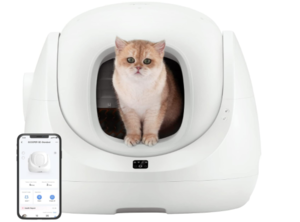As a cat owner, you want the best nutrition for your feline friend. Making homemade cat food is a great way to do this. It ensures your cat gets the nutrients they need.
A homemade cat food diet lets you choose the best ingredients. You can make the food fit your cat’s needs. This helps keep your cat healthy and happy for a long time.
Key Takeaways
- Preparing homemade cat food allows for control over ingredient quality.
- A well-balanced diet is crucial for maintaining your cat’s overall health.
- Using fresh, wholesome ingredients can help prevent health problems.
- A homemade cat food diet can be tailored to your cat’s specific needs.
- Promoting a long, healthy life for your cat through nutrition.
Why Make Your Own Cat Food at Home
Preparing your cat’s meals at home is good for their health and happiness. You can make sure they get the best nutrition.
Benefits of Homemade Cat Food
One big plus of making your cat’s food is controlling the ingredients. This is great for cats with food allergies.
Control Over Ingredients
At home, you pick high-quality, healthy cat food ingredients. You avoid fillers and by-products found in store-bought foods.
Potential Health Improvements
Many cats get healthier after eating homemade food. They might have shinier coats, better digestion, and more energy.
Common Concerns with Commercial Cat Food
Commercial cat foods often have fillers and by-products that don’t help cats much. There’s also a risk of recalls because of contamination or quality problems.
Fillers and By-products
Commercial foods may include fillers like corn, wheat, and soy. These can be hard for cats to digest. Making your own food lets you use protein-rich foods instead.
Recalls and Quality Issues
The pet food industry has had many recalls and quality problems. Making your cat’s food at home means you can be sure of its quality and safety.
Understanding Your Cat’s Nutritional Needs
Cats need a balanced diet that meets their special needs. They must eat a lot of protein from animals to stay healthy.
Obligate Carnivores: What This Means
Cats are obligate carnivores. This means they need a lot of protein from animals. Their bodies are made to eat meat as their main food.
In the wild, cats hunt and eat prey. This gives them the nutrients they need to survive.
Key characteristics of obligate carnivores include:
- High protein requirements
- Specific vitamin and mineral needs
- Dependence on animal-derived nutrients
Essential Nutrients for Feline Health
Cats need certain nutrients to stay healthy. These include:
Protein Requirements
Cats need a lot of protein from animals like chicken, salmon, or beef. This protein must be easy for them to digest.
Fat Requirements
Fats are important for cats too. They give energy and help their skin and fur. Healthy fats come from fish oil and chicken fat.
Vitamin and Mineral Needs
Cats also need special vitamins and minerals. These are found in animal tissues. They include vitamin A, taurine, and arachidonic acid.
| Nutrient | Function | Source |
|---|---|---|
| Protein | Muscle growth and maintenance | Chicken, Salmon, Beef |
| Fat | Energy, skin and coat health | Fish oil, Chicken fat |
| Vitamin A | Vision, immune function | Liver, Fish oil |
The Best Homemade Cat Food Ingredients
Choosing the right ingredients is key for homemade cat food. Cats need lots of protein and special nutrients from animal sources.
High-Quality Protein Sources
Protein is very important for cats. They need different meats and fish for their diet.
Muscle Meats
Meats like chicken, turkey, and beef are great for protein. Make sure they are lean and chopped well for easy digestion.
Organ Meats
Organ meats, like liver and kidney, are full of vitamins and minerals. They make homemade cat food more nutritious and interesting.
Fish Options
Fish like salmon and sardines are full of protein and omega-3 fatty acids. These help keep your cat’s skin and coat healthy.
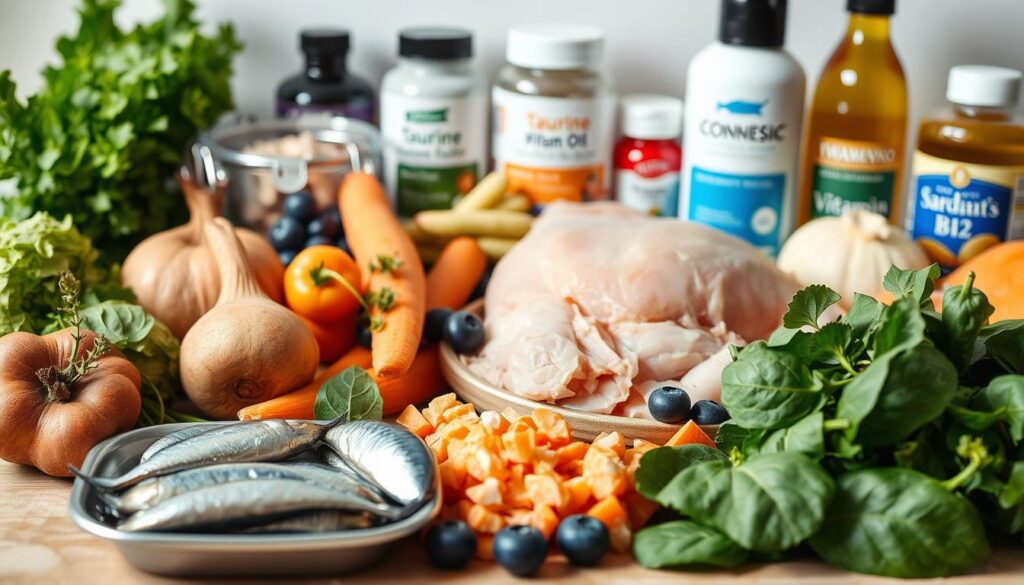
Healthy Fats for Cats
Fats are also very important for cats. They give energy and help with health.
Animal-Based Fats
Fats from animals, like in meat and fish, are very good. They give cats the fatty acids they need for health.
Supplemental Oils
Adding fish oil to cat food helps with omega-3 fatty acids. This is good for their skin, coat, and health.
Micronutrients and Their Sources
Micronutrients, like vitamins and minerals, are crucial for your cat’s health. They can be found in meats, organs, and some supplements.
Using these top-quality ingredients in homemade cat food ensures a balanced and healthy diet for your cat.
Ingredients to Avoid in DIY Cat Food
When making homemade cat food, it’s key to know which ingredients to skip. This keeps your cat healthy and safe.
Toxic Foods for Cats
Some foods safe for people can harm cats. Knowing these can stop poisoning accidents.
Common Kitchen Ingredients That Harm Cats
- Onions and Garlic: These can cause anemia in cats.
- Grapes and Raisins: They can cause kidney failure in cats.
- Chocolate: It has theobromine, which is toxic to cats.
Seasonings and Additives to Avoid
Certain seasonings and additives can harm cats. For example:
- Salt: Too much salt can upset electrolyte balances.
- Xylitol: A sugar substitute found in many products, it’s very toxic to cats.
Controversial Ingredients
Some ingredients are debated because of their health effects on cats.
Grains and Carbohydrates
Cats need a diet rich in protein and low in carbs. While not toxic, too many grains can cause nutritional problems.
Dairy Products
Cats can’t digest dairy well because they’re lactose intolerant. It’s best to leave these out of healthy cat food ingredients lists.
By avoiding these ingredients, you can make a safer, healthier homemade cat food recipe. This will meet your cat’s nutritional needs.
Essential Equipment for Making Cat Food
Making homemade cat food needs some key tools. These tools help make the food safe and good for your cat.
Kitchen Tools You’ll Need
You’ll need basic kitchen tools to start. Grinders and food processors are very important. They chop and mix the ingredients well, making sure your cat eats a balanced meal.
Grinders and Food Processors
A good grinder or food processor is key. It should be easy to clean and have different speed settings.
Measuring Tools and Scales
You’ll also need measuring tools and scales. They help you get the right amounts of each ingredient. This keeps your cat’s food balanced and healthy.
Storage Containers and Options
Good storage containers are important. They keep your cat’s food fresh. Choose airtight containers that are easy to clean and can go in the fridge or freezer.
Basic Homemade Cat Food Recipes
Want to control your cat’s diet? Homemade cat food recipes are a great way. They let you tailor meals to your cat’s needs. This makes meals healthy and fun for your cat.
Raw Diet Recipe
A raw diet gives your cat nutrients in their natural form. Here are a couple of recipes to try:
Balanced Chicken-Based Recipe
This recipe uses chicken, a great protein source. You’ll need:
- 1 pound of ground chicken
- 1 egg
- 1 teaspoon of fish oil
- 1 teaspoon of flaxseed oil
- 1/2 teaspoon of vitamin E supplement
Mix everything together and serve. It’s a balanced mix of protein, fats, and nutrients.
Fish and Turkey Variation
Try substituting chicken with fish and turkey. Use:
- 1/2 pound of salmon fillet
- 1/2 pound of ground turkey
- 1 egg
- 1 teaspoon of flaxseed oil
Mix the ingredients and serve. It offers a different protein mix and is good for cats with sensitivities.
Cooked Diet Recipe
Cooking your cat’s food is a good alternative to raw diets. It’s safer from bacteria. Here are some cooked diet recipes:
Simple Cooked Chicken Recipe
This recipe is easy and uses chicken. You’ll need:
- 1 pound of boneless, skinless chicken breast
- 1/4 cup of cooked brown rice
- 1 teaspoon of fish oil
Cook the chicken well, then mix it with rice and fish oil. Serve it up.
Multi-Protein Cooked Option
For a varied protein mix, combine different meats. Use:
- 1/2 pound of chicken breast
- 1/4 pound of ground beef
- 1/4 pound of turkey breast
- 1/4 cup of cooked sweet potatoes
Cook all the ingredients until the meats are done. Then serve.
Special Dietary Needs Recipes
Cats with health issues or age need special diets. Here are recipes for those needs:
Senior Cat Formulations
Senior cats need fewer calories but more digestible proteins. A recipe for them might include:
- 1/2 pound of cooked chicken
- 1/4 cup of cooked carrots
- 1/4 cup of green beans
Mix the ingredients and serve. It’s easy on their stomachs and gives them needed nutrients.
Kidney-Friendly Options
Cats with kidney issues need a low-phosphorus diet. Use:
- 1/2 pound of cooked chicken breast
- 1/4 cup of cooked egg whites
- 1/4 cup of low-phosphorus vegetables like green beans
Mix the ingredients and serve. It helps manage phosphorus and supports kidney health.
Using these cat nutrition recipes and organic cat food recipes, you can meet your cat’s nutritional needs. This way, you tailor meals to their specific needs.
Preparation and Safety Guidelines
When making homemade cat food, it’s key to follow safety rules. This keeps your cat healthy and happy. Homemade food can be better than store-bought, but you must handle it right.
Handling Raw Ingredients Safely
It’s very important to handle raw ingredients safely. Use different cutting boards and tools for raw meat, poultry, or fish. This stops bad bacteria from spreading.
Preventing Cross-Contamination
Always wash your hands well before and after touching raw ingredients. Use separate containers for raw foods and keep them closed tight.
Proper Cleaning Procedures
Clean and sanitize all tools and surfaces after use. Use hot soapy water and then a bleach solution to sanitize.
Cooking Methods That Preserve Nutrients
How you cook homemade cat food matters a lot. Use gentle methods like steaming or baking. Don’t overcook, as it can lose important nutrients.
Proper Storage Practices
Storing homemade cat food right is crucial. Use airtight containers to keep it fresh and safe.
Freezing Guidelines
Freeze homemade cat food in airtight containers or bags. This stops freezer burn. Label them with the date and what’s inside, and keep them at 0°F (-18°C) or colder.
Refrigeration Timeframes
Put homemade cat food in the fridge right after cooking. Use it in 3 to 5 days. Always check for spoilage before feeding it to your cat.
By following these steps, you can make healthy homemade cat food. You can add important homemade cat food supplements and healthy cat food ingredients too.
Consulting with Veterinary Professionals
To make sure your cat stays healthy, talking to a vet is key when making homemade cat food. This step helps make sure your cat gets the right food and stays safe.
When to Seek Veterinary Guidance
It’s very important to talk to a vet before changing your cat’s diet a lot. If your cat has health issues or you’re not sure about the food, start with a vet. They can give advice that fits your cat’s needs, age, and life.
Working with a Veterinary Nutritionist
A vet nutritionist can make a special cat food recipe for your cat. They check if your recipe is balanced and suggest changes if needed.
Finding a Qualified Professional
To find a good vet nutritionist, ask your vet for a referral or look at professional groups. Make sure the vet you pick is qualified and has experience.
Questions to Ask Your Vet
When you talk to your vet, have questions ready. Ask things like: “What nutrients does my cat need?” “What ingredients should I avoid?” and “How do I make sure the food is balanced?”
| Aspect | Description | Importance |
|---|---|---|
| Nutritional Balance | Ensuring the recipe provides all necessary nutrients. | High |
| Ingredient Safety | Avoiding toxic or harmful ingredients. | High |
| Health Monitoring | Regular check-ups to monitor cat’s health on the new diet. | High |
Transitioning Your Cat to Homemade Food
When you start giving your cat homemade cat food, do it slowly. This helps avoid upset stomachs. It also makes sure your cat likes the new food.
Creating a Gradual Transition Plan
Begin by adding a little homemade food to their usual diet. Slowly add more homemade food over a few days.
Week-by-Week Schedule
Here’s a simple plan:
- Week 1: 25% homemade food, 75% current diet
- Week 2: 50% homemade food, 50% current diet
- Week 3: 75% homemade food, 25% current diet
- Week 4: 100% homemade food
Dealing with Picky Eaters
If your cat is hard to please, try warming the food a bit. Or add a little tasty liquid, like low-sodium chicken broth.
Monitoring Your Cat’s Health
Watch your cat closely as they get used to the new food. Look for signs they’re doing well, like a healthy weight and shiny coat.
Signs of Successful Transition
Good signs include:
- Normal stool quality
- Maintaining energy levels
- A healthy, shiny coat
Red Flags to Watch For
If you see any of these, talk to your vet:
- Diarrhea or vomiting
- Lethargy
- Loss of appetite
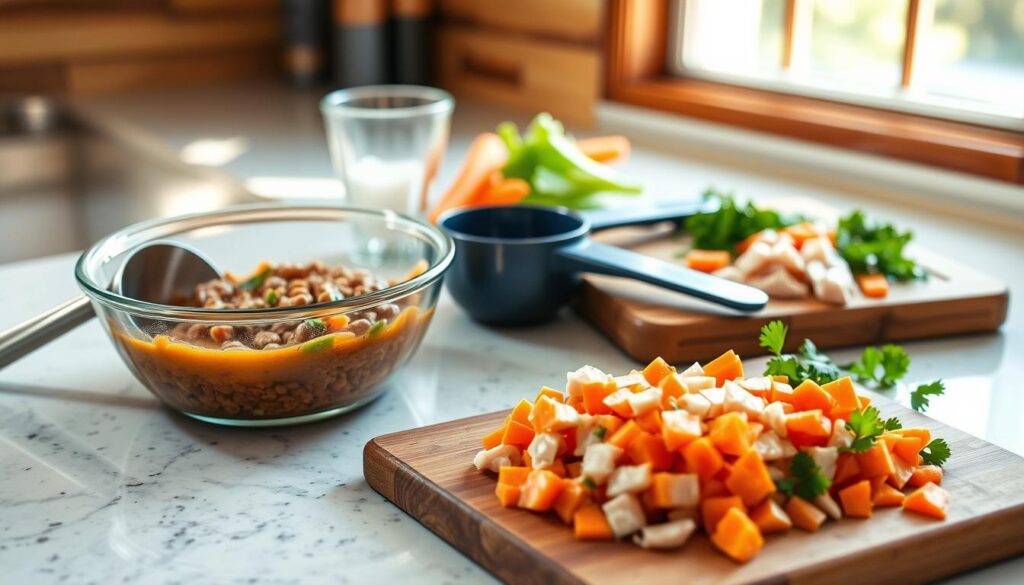
Conclusion
Making the best homemade cat food means knowing what your cat needs. Use natural ingredients like high-quality proteins and healthy fats. This helps keep your cat healthy and happy.
It’s important to stay away from foods that are bad for cats. Talking to a vet and slowly changing your cat’s food is key. This makes the transition easier and safer for your cat.
Choosing the right ingredients for homemade cat food is important. This way, you can give your cat a better life. With good advice and recipes, you can make food that’s just right for your cat.
FAQ
What are the best homemade cat food ingredients?
Good ingredients for cat food include chicken, salmon, and turkey. Also, add healthy fats like omega-3 fatty acids. Don’t forget vitamins and minerals for their health.
How do I ensure my homemade cat food is nutritionally balanced?
Talk to a vet nutritionist to make sure your cat’s food is balanced. You can also use recipes from trusted sources.
What are some common mistakes to avoid when making homemade cat food?
Avoid using low-quality ingredients and not balancing the diet. Always talk to a vet. Also, handle raw ingredients safely and store food right to avoid contamination.
Can I use supplements in my homemade cat food?
Yes, but talk to a vet first. They can help pick the right supplements for your cat. This ensures you’re not giving too much.
How do I transition my cat to a homemade diet?
Start by mixing a little homemade food with their old food. Slowly add more homemade food over weeks. This helps their stomach adjust.
What are the benefits of a raw diet for cats?
Raw diets can make cats healthier. They are full of protein and low in carbs. This is good for their health.
How do I store homemade cat food safely?
Keep homemade food in airtight containers in the fridge or freezer. This keeps it fresh and safe. Always handle food safely to avoid contamination.

